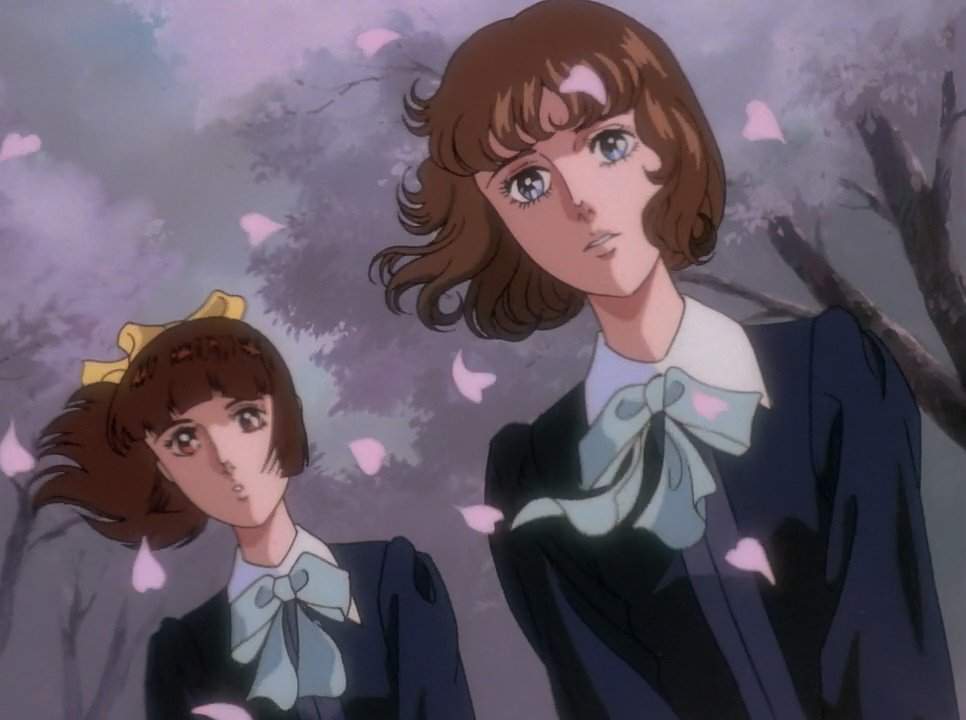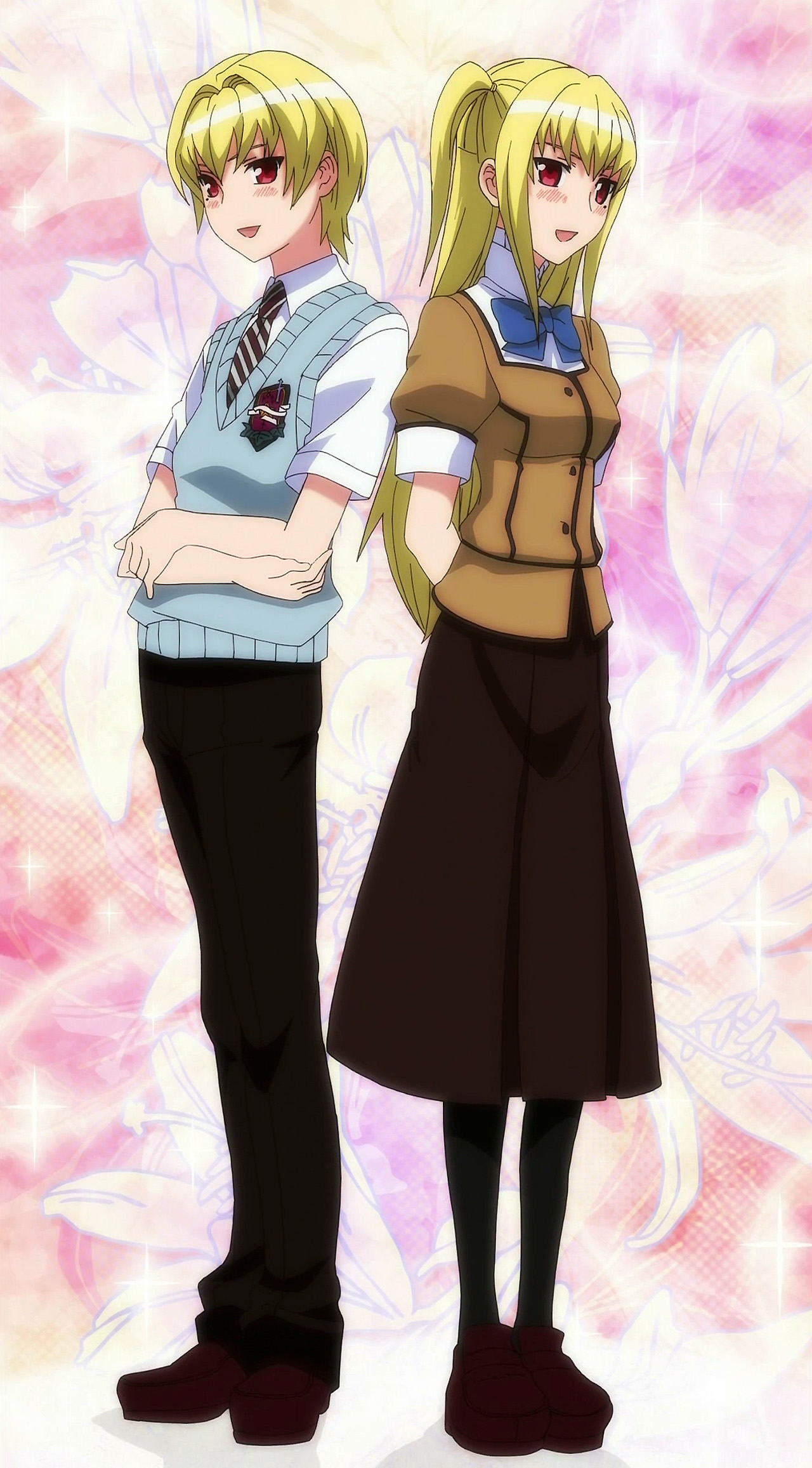Same-sex relationships are still frowned upon in Japan, but it’s not just that. Even in areas where homosexuality is accepted, it is difficult to come to terms with your sexuality, especially if you develop feelings for close friends, as is the case with most Girls Love shows.
Girls Love anime has a big fan following. These anime are not only wholesome, but they normalize female romantic relationships. Girls Love Anime shows the beautiful meaning of love and how it is not necessary to love the opposite gender. The genre is among the most widely known genres in Japan, influencing many anime and manga series.
In general, the 2010s were an important decade for LGBT shows, but especially for female-female anime series. There were a lot of great dramas, romances, and comedies to choose from.
The plot of this genre of anime varies from deep bonding in school to childhood friends, and some anime have a very fan service-driven plot, while others have done exceptional work to portray this emotional aspect of the anime.
In case you have a diverse opinion on lesbian anime, make sure you check our list of the best Girls Love anime because it might change your opinion. While a lot of anime have GL moments to them, the shows listed below truly belong in the GL genre.
Yagate Kimi ni Naru

Yuu Koito has always been enamored with romantic shoujo manga and love song lyrics. Once she receives a confession, she waits patiently for the wings of love to sprout and spark her heart.
She feels hollow, however, when her junior high classmate declares his love for her during their graduation ceremony. She realizes: she understands romance as a concept, but she hasn’t experienced it first hand.
Yuu still ruminates over how to respond to her suitor after enrolling in high school, still disconcerted and disspirited. While there, she encounters the seemingly flawless student council president, Touko Nanami, rejecting her own confession maturely.
Yuu is smitten by Touko’s elegant manner, approaching her for advice, only to be shocked when the president confesses to her! Yuu soon finds herself in the palm of Touko’s hand and begins a journey for the emotion she has sought throughout her life.
In addition to Yuu and Touko, there are many other interesting characters as well. Most of the cast has a feminine charm that truly brings out the elegance of their characters. It is a straightforward story, and the relationship between the characters is extremely well crafted.
Yagate Kimi ni Naru focuses on the complexity of love. This show manages to capture the expression of love in ways that exceed your expectations. It seizes opportunities to recreate a sensational drama without stepping over the line. In the series, school life is used to build relationships and create perfect moments where the characters can be together. The series is also simple and pleasant to watch. It does not require any strange exaggeration to make you fall in love.
Oniisama e…

16-year-old Nanako Misonoo believes her future will be bright when she enters the prestigious all-girls Seiran Academy. Rather, the unlucky girl is caught in a web of deception, misery, and jealousy. Furthermore, she is inducted as the newest member of the Sorority, an elite group whose members are the envy of the entire school.
Nanako, lacking the grace, wealth, and talent of the other members, quickly draws the ire of her jealous classmates-particularly the fierce Aya Misaki.
In order to cope with her increasingly difficult school life, Nanako recalls her past through letters she wrote to her former teacher, Takehiko Henmi, whom she affectionately refers to as “onii-sama.” Nanako also finds comfort with her four closest friends: childhood friend Tomoko Arikura, the sociable but erratic Mariko Shinobu, the musician who’s troubled Rei Asaka, and the sporty tomboy Kaoru Orihara.
In this intense drama about the challenges of bullying, Oniisama e… follows a young girl at her new school, as she endures cruel rumors, heartless classmates, and countless social trials.
Narration is sometimes considered an outdated storytelling tool that implies that the creators were too lazy or inexperienced to provide the audience with clues to the characters’ thoughts and feelings. However, this show is a great example of creative narration that succeeds.
Nanako, the main character, provides it prominently in the form of letters written to her elder brother, providing a unique structure and allowing for a mixture of disjointed questions and thoughts about nearly all significant events. In a young girl’s letter, everything feels natural.
Nanako and her emotions are the main focus of this anime. Thankfully, her character is very appealing from the start, and she does evolve throughout the series, which is acknowledged and emphasized.
Asagao to Kase-san.

Yui Yamada, a high school girl who loves plants and gardening, falls in love with Tomoka Kase, the star of the track team. Yui is girly, shy, and has never been in a relationship.
Tomoka, in contrast, is vivacious, tomboyish, and popular among her friends. While they are different in so many ways, they try to understand and support each other while experiencing the rush of exhilaration that comes with the thrill of first love.
It is a heartwarming tale of two girls struggling to deal with their ever-increasing feelings for each other as well as other concerns that plague the hearts of young lovers.
Asagao to Kase-san displays a beautifully crafted lesbian love story packed with both romance and drama in perfect proportion. Despite its lack of originality, the story is well-crafted and enjoyable. They go through the highs and lows of their relationship, as one is more experienced and the other is incredibly naive.
Having established their relationship in the first couple of scenes, the anime then focuses on the nuances of their relationship. Throughout, the viewers are given a balanced proportion of sweet fluff and substantial drama.
The conflicts that arise in the course of the characters’ relationship feel very natural and organic, and they’re interspersed with sweet scenes that paint the relationship with even more detail. Although the climax of the story isn’t new, the narrative is well-crafted and well-executed.
Because of this, the anime is a very tidy hour-long package, summarizing the multiple volumes of the manga in a well-paced and well-executed manner. Its lack of novelty is more than made up for by a solid plot and excellent execution that make for a highly enjoyable romantic anime.
Yuru Yuri

Akari Akaza is finally reunited with Yui Funami and Kyouko Toshinou at her all-girls middle school after a year spent without her childhood friends. Yui and Kyouko formed the “Amusement Club” during their first year, which now occupies the now nonexistent Tea Club.
After Akari joins, Chinatsu Yoshikawa, one of her classmates, pays the trio a visit under the impression that the trio belongs to the Tea Club; only when the three girls explain that the Tea Club has been disbanded are they able to convince Chinatsu to join the Amusement Club, which exists solely to provide entertainment to its members.
Yuru Yuri is an unusual comedy about a group of girls who spend all their time drinking tea and fawning over one another, all without even noticing the supposed main character Akari.
There are so many cute characters in this show, each with their own kind of cuteness and personality. Akari’s lack of presence in the anime is humorous. It is Kyouko’s flamboyantly hyperactive personality that makes her stand out more than any other character. Chinatsu is simply adorable. Yui, on the other hand, is much tamer than the rest of the Amusement Club and has a very level head.
In terms of plot, the show revolves around the characters, what they do, and how they react to each other, and overall it works. The comedy in the show is great; you will find yourself laughing to tears on a number of occasions, and well, besides the cuteness of the show, there isn’t much else to say except a job well done. You will love it from start to finish for what would normally be considered another generic slice of life anime.
Konohana Kitan

As an attendant at Konohanatei, a traditional hot springs inn, Yuzu, a cheerful fox girl, starts her first job in a bustling village of spirits. As Yuzu has never worked at such a high-class establishment, Kiri, the friendly and capable head attendant, puts her to work learning the ropes.
Although Yuzu’s eagerness initially proves a hindrance rather than a blessing, both customers and workers quickly come to accept her clumsy but well-meaning errors. Yuzu learns the trade of an inn attendant and learns to cherish the magical world surrounding her under the guidance of the other four foxes – rigid Satsuki, carefree Natsume, critical Ren, and quiet Sakura.
In Konohana Kitan, a fox girl forges bonds with others and finds a home among the mysterious and beautiful world of spirits.
This is an anime that you will really enjoy watching, and among its strong points, it has an interesting premise, an excellent story that conveys a lot of interesting life lessons, and an interesting and well-developed cast of characters. You don’t often see a group of mythical girls hanging out together and having fun.
Konohana Kitan is a show that’s as simple as they come – cute girls doing cute things with a touch of fantasy. It is one of those animes that knows how to combine all the ingredients to craft a charming slice of life.
Konohana Kitan proves slice of life doesn’t always have to be modern. Characters don’t always have to live school lives. Because of its credible genres, this anime has its own distinct style. Characters are adapted so that each one brings out the best in the other.
Mai-HiME

This is the story of Mai Tokiha, an ordinary high-school girl who transfers with her younger brother, Takumi, to the prestigious Fuuka Academy. A number of mysteries surround the elite Fuuka Academy, involving students and staff alike. Upon their arrival at the Academy, Mai finds herself bound to a Child, a part-spiritual, part-mechanical creature that can only be brought to life by girls with the HiME mark.
It is revealed to Mai that she is one of twelve girls who have the mark, and they must use their abilities to protect everyone from Orphans, monsters with abilities similar to the HiME’s Children. In spite of Mai’s reluctance to get involved at first, the other HiME quickly manifest around her, all with very different motives and goals for using, or not using, their powers.
When the Orphans become more numerous and aggressive, Mai joins the other HiMEs in a fight against them in order to protect those around her, including her friends who are drawn into the conflict, too. Mai and the other HiME soon discover, however, that Orphans are not the only enemies they have to contend with, and as the cause of all of this is revealed, they find themselves learning a dark secret about their destiny.
Due to the high number of cast members, it can be confusing the first time watching the series. With so many cast members, it can get messy the first time watching it. As soon as you get past the confusion of knowing the characters, you’ll see how well each is written. No matter whether it is friendship, hatred, or romance, the strong links between each of the HiME all prove to be important aspects of the story.
Watashi ni Tenshi ga Maiorita!

Miyako Hoshino, a college student, is quite shy around other people. She mostly spends her time making cosplay outfits in her room. Her fifth-grade sister Hinata brings Hana Shirosaki home, and Miyako immediately becomes enamored with Hana’s cuteness.
Miyako tries various things, from getting Hana to wear cosplay dresses to giving her sweets. At first, Hana has a negative opinion of Miyako, but she will do whatever it takes to become closer to the angel who has descended before her.
It’s hard to write romance, it’s even harder to write about an age gap between a 10 and 20 year old, and even more difficult to sell it to an audience. However, they did it, they achieved it, and the result is the sweetest and most heartwarming romance ever depicted on screen.
Making characters believable and entertaining at the same time is the key to success. In our story, the protagonist isn’t over the top, and the love interest naturally isn’t immediately on board; on the contrary, even though the older girl is really shy and lovestruck like a pure maiden, the young one still has a hard time even trusting the cosplay maker.
They are human characters, and like humans, there is character development; things don’t stay static, progress is made, and the characters grow, both as people and to each other. The show makes it clear that they complement each other very well; one has terrible fashion sense and is essentially useless at home chores, while the other has big social anxiety issues.
As the show goes on, their dynamic gets better, and they grow together as a team as they work on their flaws.
Maria-sama ga Miteru

As Yumi Fukuzawa entered Lillian Girls’ Academy, an elite all-girls Catholic school in Tokyo, she had no idea she would catch the attention of beautiful and demure Sachiko Ogasawara, one of the school’s most popular students. Sachiko offers to be Yumi’s soeur, like a sister to her and a guide during all the years she will be at the academy. Yumi is completely flustered by this whole idea. After all, they hardly know each other!
Yumi is conflicted about accepting Sachiko’s offer as rumors swirl around campus about the two of them. Sachiko admires her, but being her soeur would also mean constantly being in the spotlight!
The story is about girls in a Catholic school. That’s it. In spite of the fact that it’s just them, their lives, it draws you in like nothing else, captivates you with their stories, and makes you yearn for more. Throughout the course of the series, Yumi’s personality matures as she makes her way through setbacks and obstacles that cause her trouble.
The series has no defined antagonists. No, “that one person” is making someone’s life miserable and must be brought down or defeated. The story has a few characters that come along and are portrayed initially as antagonists or rivals. As the story continues, you see they are usually motivated by protecting or helping someone else.
In the series, the conflict comes from each character’s personality and how they relate to others. The series is not filled with outright hatred, and the drama usually comes from misinterpretation, insecurity, or not being able to communicate well due to circumstances or a lack of courage.
Mnemosyne: Mnemosyne no Musume-tachi

Many people would like to be immortal. Would it really be such a coveted ability if people knew they would be subject to countless attacks because of it? This is the case for Rin Asougi, a private investigator who is immortal, as there are many people who want her dead. Throughout the centuries, she has met many grisly ends, but she always returns to life.
As Rin looks for a lost cat in 1990, he meets Kouki Maeno, a man who believes that his memories are incorrect. After agreeing to help Kouki, Rin discovers that he is not who he seems, all while drawing closer to her true enemy. Rin and her kind are well known to this adversary, and if she dies at his hands, she may stay dead forever.
The strength of the series is its depiction of immortal beings, the evolution of society and technology throughout the decades-long time jump between episodes, the aging of mortal characters, and their long but passing relationships with the main characters. The view of long-living characters in Mnemosyne is more realistic and accurate compared to most other anime.
The antagonists in this anime manage to remain a mystery to the end, with very little information about their motives, personalities, and goals obvious to the viewer, as well as their origins and natures. As a result, interesting, but often small details are revealed in every episode, successfully enticing the audience.
The protagonists, as immortals, largely resist changes in personality and habits and maintain interesting relationships with the supporting cast, aware that those are fragile just as the lives of innumerous beings they have watched fade away throughout the ages, but also not treating them as disposable or of low value.
Strawberry Panic

Nagisa Aoi starts her new school life as a transfer student at St. Miator’s Girls Academy, one of three prestigious all-girls schools atop Astraea Hill. After getting lost on her first day, Nagisa meets a mysterious student whose elegance and charm are so enticing she ends up in the infirmary.
Nagisa’s roommate Tamao Suzumi greets her as soon as she awakens, enthusiastically introducing her to the daily life and social structure on campus. Tamao informs her of the existence of the Etoile, or star, who represents all three schools.
Nagisa is eager to meet the ethereal beauty she met earlier, Shizuma Hanazono, who is the one and only Etoile herself! Furthermore, Shizuma seems to be quite interested in Nagisa! Nagisa’s interactions with Shizuma make her a popular topic on campus, yet despite her fascination, Nagisa can’t help wondering if something is off.
Strawberry Panic! follows the everyday routines of Nagisa, Shizuma, and her friends at St. Miator’s, St. Spica, and St. Lulim as they navigate through the challenge of relationships while confronting hidden feelings, lingering regrets, and new possibilities.
The plot is substantial enough to keep it interesting, and on your toes, it’s hard to stop watching since each episode kind of leaves it open to the next one, but that’s okay; there’s also more than just one plotline unfolding at a time, with multiple characters interacting with each other simultaneously.
The character and plot developments in this anime are well-executed. This anime has a very good variety of characters, each holding some form of an archetype, but not blatantly so. It is easy to tell what kind of personalities the characters are going to have within a few episodes of their introduction.
Adachi to Shimamura

It is possible to hear two girls playing table tennis somewhere in the school at noon, as they wait for time to pass.
Two students – Sakura Adachi and Hougetsu Shimamura – stumble upon each other by accident on the second floor of the school gym. As their friendship develops, their feelings for each other gradually become more ambiguous. They must navigate their contrasting personalities as well as determine the depth of their passion for each other as they grow closer to each other.
When one of them develops feelings beyond the boundaries of a platonic relationship, the nature of the relationship gradually changes. Adachi and Shimamura, however, must decide whether a bond stronger than friendship will bring them closer or tear them apart.
Early on, the impression is that they do not see each other as more than close friends. In time, they begin to realize that their relationship may not be as straightforward as they initially thought.
Shimamura and Adachi are quite different. On the one hand, we have Adachi, a shy and unsociable girl who avoids social interaction and skips most of her classes. Shimamura, on the other hand, also skips classes, but unlike Adachi, she seems outgoing and friendly. Shimamura is very different from Adachi in many ways. When they are together, however, their differences are no longer relevant and don’t matter.
Since this anime explores the minds of both Adachi and Shimamura individually, we get insights into their thought processes and what they genuinely think of each other. Due to this, we are always informed of any development in their relationship, even if it appears minor or insignificant to most.
Aoi Hana

Fumi Manjoume, who is shy and soft-spoken, and Akira Okudaira, who is forthright and caring, used to be best friends in elementary school, but this changed after Fumi and her family moved away.
As a result of being accepted at Matsuoka Girls’ High School, Fumi returns to her hometown. Akira, who is going to Fujigatani Girls’ Academy, finally reunites with her. Even though they are reunited, their relationship isn’t the same as it used to be.
As soon as Fumi begins attending school, Yasuko Sugimoto takes notice of her and flatters her more than any other underclassman. Fumi must find her own identity instead of standing in someone else’s shadow after running to Akira so many times before.
Akira, however, still wants her friendship with Fumi to be as it once was. Can the girls overcome the teen years before they are torn apart?
Like its lead character Fumi, this series is not flashy but rather soft and delicate. It is more real and diverse than your typical romance series. Girls Love romances are usually set in an unrealistic world where everyone is gay without question, and there are no social consequences.
Throughout the show, the cast experiences crush and unrequited love for both male and female characters. The story is very mature and classy. Even though there is intimacy and mature themes, all are handled so tastefully that it really stays true to the anime’s themes. Aoi Hana is a title you shouldn’t miss. It’s a bold and original production in an industry full of the same tired old themes and sequels.
Tonari no Kyuuketsuki-san

There is a legend about an ageless girl who only comes out at night and lives amidst the forest in a giant mansion. It is said that she is a living doll with a soul. Akari Amano, hearing these rumors, decides to seek out the girl. However, as she treks through the forest amidst the darkness, she finds herself lost.
She is saved by a vampire named Sophie Twilight, who turns out to be the rumored girl. Sophie, unlike the vampires in myths, does not attack humans and instead orders blood online. She immediately charms Akari with her doll-like appearance, and she decides to move in with her and start a new life together.
Besides the first encounter between our characters, there is not much actual content in the story. Essentially, the show revolves around humans and vampires hanging out in an enormous vampire mansion and doing cute and girly things. The series is lighthearted and ridiculously friendly. That’s it for the storyboard.
This cast has a lot of comedic quirks, they’re endearing, and they have a strong dynamic. They’re not complex, but they don’t need to be. This is a slice-of-life comedy. It needs to be funny and enjoyable, not too deep.
What makes the heavy dose of cuteness work without becoming cloying is the titular Ms. Vampire, Sophie Twilight. This series would be a mess without her at the center, but she’s a great character and manages to hold everything together.
She’s funny and cute and has a distinctive personality of her own, but she’s at her best playing the straight man against Akari and Ellie’s unrestrained goofiness. She accentuates the best in them and keeps them from getting annoying or overly wacky.
Yuri Kuma Arashi

Humanoid bears once lived alongside humans. After a meteor shower struck Earth, bears throughout the world became violent and hungry for human flesh, spurring an endless cycle of bloodshed that saw bears eat humans and humans shoot bears, forgetting the friendly relationship they once shared. Thus was built the “Wall of Severance,” which separated the two civilizations and maintained peace.
Two lovers attending Arashigaoka Academy, Kureha Tsubaki and Sumika Izumino, find their relationship threatened by two bears who have passed through the Wall of Severance and infiltrated the academy.
Ginko Yurishiro and Lulu Yurigasaki, hungry yet affectionate bears, seem to see the bear-hating Kureha as more than just food, and in getting closer to her, reveal secrets that Kureha may not be able to handle.
The girls must stand on trial for their love when they rile up the Invisible Storm, a group that maintains order within the ideological school. They set out on a process of self-discovery in order to qualify to receive their true love’s “promised kiss.”
In terms of plot, this anime may appear to be nothing special at first glance, but if you examine the purpose of it all and how masterfully it is woven into the theme of homosexuality and how society views homosexuality, you can see how well written it really is.
The aspect that really makes this show work and ties all its themes together without many loose ends is the cast of characters. While they initially feel distant and unrelatable, the characters eventually emerge as unique and likable, not to mention the fact that they represent the concepts that the show is exploring.
Maria†Holic

Her parents fell in love at Ame no Kisaki Catholic school, which inspired Kanako Miyamae to transfer there in search of true love. There is one difference, however: Kanako has come to the all-girls school to find a partner of the same sex since men cause her to break into hives.
In meeting the beautiful Mariya Shidou, Kanako believes she has found that special someone. However, Mariya isn’t what she appears to be. In fact, Kanako’s first love is actually a cross-dressing boy. Kanako fears that if she does not keep Mariya’s real gender a secret, she will be exposed as having impure intentions, and to make matters worse, he replaces her original roommate so that he can now keep an eye on her.
In Maria†Holic, Kanako looks for love in all the wrong places and tries to find the girl of her dreams-that is if she can survive being Mariya’s roommate!
The nonsensical, silly, parody-esque story will quickly become familiar to you. Even its own story isn’t taken seriously in this anime. This isn’t a deep, story-driven anime; you’re looking for something like that.
If you’re looking for a lighthearted, funny story with little relevance but plenty of laughs, then this is the one for you. The story is easy to follow and filled with twists and turns from the very first episode.
As for the characters, the lead, Kanako, is funny at times, and the other lead, Mariya, keeps things interesting with her cruel, shameless humor. Both Kanoko and Mariya are brilliant. They’re funny and well-acted, and just great. There is, of course, a great cast of supporting characters to add to the hilarity, making for hilarious situations. You should definitely try to watch this anime.
Candy Boy: Nonchalant Talk of the Certain Twin Sisters in Daily Life

Yukino and Kanade Sakurai are twin sisters who live together in a high school dorm. Despite being twins, they act romantic towards each other, holding hands and going on dates. Kanade one day sees Yukino hanging out with a new girl, Sakuya Kamiyama.
As Kanade realizes how much time these two spend together, she begins to distance herself from her sister. When Yukino notices Kanade leaving, she appeals to her not to do so. Actually, Sakuya only asked for advice on Kanade, revealing her obsession. What will become of this love triangle?
Candy Boy is a sweet, good-natured slice of life romantic comedy. The plot in Candy Boy is uncomplicated and revolves around twin sisters Kanade and Yukino and their high school life together.
Unlike a lot of slice-of-life series, Candy Boy’s episodes feel like they are all part of one large movie-sized one as events flow seamlessly from each episode. The comedic moments are well-timed and serve to enhance the series overall without taking the limelight away from the relationship dynamics.
The characters are excellent in the series. A big part of the reason for this is that the cast is extremely small and focuses exclusively on only four characters. This is an excellent decision since the series is already short and doesn’t have time to build much depth in the characters. You get a good feel for all of their personalities and their motivations.
There isn’t much angst in terms of relationships, which is a nice change of pace. Kanade and Yukino are deeply in love with each other, and nothing seems to be able to separate them. If you enjoy yuri or simply want to watch a sweet slice of life series without being bothered by the subject matter, watch it.
Sakura Trick

Haruka Takayama and Yuu Sonoda have been best friends since middle school and plan to attend Misato West High School together. Despite being assigned to the same class, they are seated on opposite ends of the classroom due to a cruel twist of fate!
In addition, their school will close in three years, making them the last intake of first-year students. Despite all of this, Haruka is determined to stick with Yuu and create many wonderful memories.
Yuu’s easygoing demeanor quickly attracts her female classmates’ attention, much to Haruka’s jealousy. As Yuu empathizes with her friend’s insecurity, she ends up sharing an affectionate kiss with her in an empty classroom. It intensifies their bond as “special friends,” gradually revealing a new aspect of their unique friendship while also inviting new conflicts.
A refreshingly different slice of life show, Sakura Trick, banishes the concept of static timelines often found in this genre of show. There is continuity between episodes, and changes in each character, as well as their relationships, minor or major, are felt along with time. This show presents us with a cast of multifaceted characters and their relationships, not only romantic bonds but also friendships and sisterhoods.
While developing characters, Sakura Trick refrains from using heavy dialogue. Instead, the characters change subtly with each episode, giving the show a natural feel that leaves plenty of room for interpretation.
Neither contrived situations nor out-of-this-world problems are emphasized in Sakura Trick. Throughout the story, tension is resolved quickly, and the characters do not escalate the situation. Drama is presented in a more organic way this way.
Mikagura Gakuen Kumikyoku (TV)

Eruna Ichinomiya wants to be around cute girls wearing cute clothes. Since Mikagura High School has the cutest uniforms around, she decides to enroll in this prestigious school known for its cultural clubs.
The girl does not realize that joining a club is mandatory and that representatives from each club must compete for the top ranking. Housing and food are awarded based on these rankings.
After chasing Seisa Mikagura, the prettiest girl in school, Eruna joins the going-home club only to find herself thrust into a battle with another club. The competition is sure to be fierce since the other club representatives wield unique powers!
Mikagura Gakuen Kumikyoku follows Eruna as she explores the different clubs at school and helps the members with their troubles, all of whom are vying for the top spot.
The protagonist goes to a school where people have superpowers; you’ve seen at least a few of these kinds of animes already. However, what sets it apart is the comedy behind the story, which stems from our heroine herself. The plot simply follows Eruna and her friends. Although it follows Eruna’s main goal, which is to be together with Seisa, it still explains the backstories of the characters around Eruna.
Every character in the show has a clear progression, and each of them plays a role. Even when certain characters have predictable arcs, they are executed perfectly.
This show has wacky, somewhat unpredictable, and funny moments and scenes throughout the anime. This is a really enjoyable anime due to the comedy it brings along with it to lighten the mood, not that it gets too dark anyway. While the cliche plot is tiring, the energetic vibe that the protagonist brings along with herself is uplifting.
Citrus

Yuzu Aihara’s mother remarried during the summer of her freshman year of high school, forcing her to transfer to a new school. Fashionable socialites like Yuzu see this event as just another opportunity to make new friends, fall in love, and finally experience their first kiss.
Yuzu’s dreams and style do not fit into the ultrastrict, all-girls school she has just joined, filled with obedient shut-ins and overachieving grade skippers. Immediately, Mei Aihara, the student council president with a beautiful and imposing appearance, notices Yuzu’s gaudy appearance and proceeds to sensually stroke her body in an attempt to confiscate her cellphone.
When Yuzu arrives home exhausted from her first day, she discovers a shocking truth – Mei is actually her step-sister! Despite Yuzu’s efforts to be friendly with her, Mei’s cold shoulder routine forces Yuzu to begin teasing her.
Yuzu is forced to the ground and kissed by Mei before she can finish her sentence. Suddenly, Mei storms out, leaving Yuzu to ponder the true purpose of her first kiss and the reason behind the tortured look in her sister’s eyes.
Citrus and its content are highly dependent on context and characterization. While these confused adolescents struggle to understand one another and themselves, wondering who and what to believe, viewers are left to make judgments about characters based on their actions and remarks, save for Yuzu’s frequent monologues.
Citrus’ dialogue is also worth mentioning. While it isn’t Shakespearean prose, it feels natural and serves the story well. The lines of characters are filled with personality and subtext, making conversations feel alive. The characters are also quick to point out the irony in one another’s lines, making the exchanges even more human.
Kämpfer

Awakening in the form of a beautiful girl might be the stuff of some guys’ dreams, but when the unexpectedly effeminized Natsuru is informed by a stuffed tiger that he is now a Kampfer, a magical fighter who has to face other Kampfers in female form, his life becomes a nightmare!
Aside from the obvious “plumbing” problems, Natsuru’s best childhood friend has a crush on his new female body instead. Not complicated enough? At Natsuru’s school, boys and girls have separate sections, so he and she are now enrolled in the same class.
He is rumored to be dating her. In addition, there are other Kampfers attending the school who want to take her out, but he doesn’t know which ones mean “on a date” and which ones mean “permanently.” Did we mention that some Kampfers have swords and guns? As the daring, new gender-bender defender must become a contender or die, hormones, fists, and other body parts will fly!
This anime is going to astonish you with something that you wouldn’t expect: A cast of characters who are unique, but most of all, lovable in some way, and over-the-top humor. It’s likely you’ll enjoy this anime even if you have seen a lot of love comedies.
Kampfer stands out from other ecchi love-comedies because of its characters. Most animes with high levels of sexual bombardment ignore the character development part of the roadmap.
As a change from most ecchi love-comedies, Kampfer digs deep into the characters. While it is not much more, it is noticeable. There’s a character for everyone to love, and the art combined with the character’s personalities makes for a charming anime in this respect.
